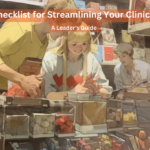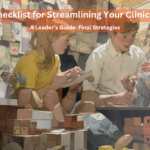Dive Into the Change
Imagine for a moment you are the VP of clinical operations at a top 20 global pharma company. You’re the captain of the ship, navigating through the complex waters of bringing a new drug to the market. It’s a journey, right? Traditionally, it’s like following a map, turn by turn, without much room to explore. But what if we could make the journey more adventurous and, dare I say, more efficient?
The Old Way: Set in Stone
Historically, clinical trials follow a straight path. Plan, execute, analyze, and report. It’s detailed, it’s thorough, but boy, is it rigid! This method loves its paperwork and sticks to the plan like glue. But here’s the catch: it’s slow to adapt. Changes in regulations? New findings? The traditional method says, “Let’s stick to the plan.”

The New School: Flexibility Meets Efficiency
Now, let’s jazz things up with principles that inject agility and efficiency into the mix. Think about it as making your trial a bit more like a jazz band – each part working together, ready to improvise when needed.
- Talk It Out: Keep everyone in the loop – patients, regulators, sponsors. It’s like having a group chat where everyone’s voice matters, steering the ship together.
- Small Steps, Big Impact: Break down the trial into bite-sized pieces. This way, you can pivot quickly, adapting to new insights without missing a beat.
- Design with the End in Mind: Align the trial design and execution so closely that they’re like two peas in a pod. This makes your trial adaptable, resilient, and ready for whatever comes its way.
- Write Smart: Use documentation to clear the fog, not to add to it. Make your paperwork a beacon of clarity that guides everyone through the process.
- Results That Matter: Focus on outcomes that truly make a difference. It’s not just about ticking boxes but ensuring that the trial makes real-world sense.
Let’s Make It Real
Picture this: a trial for a groundbreaking heart medication. Traditionally, you’d plow through, phase by phase, with little wiggle room. But with these new principles, when early data suggests an adjustment could save months, you adapt swiftly. You’re not just following the map; you’re navigating by the stars, making smart, quick decisions that bring life-saving treatments to patients faster.









